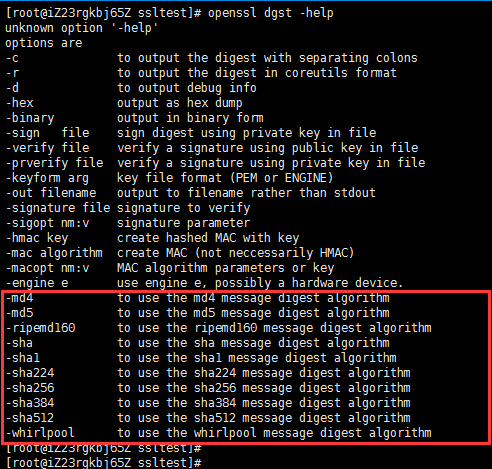Make a note here. After reading some information on the Internet, I understand the working principle of the https protocol.
First let’s talk about symmetric encryption and asymmetric encryption. Symmetric encryption means that the same secret key is used when encrypting and decrypting information. , the advantage of symmetric encryption is high efficiency but relatively insecure; asymmetric encryption keys are divided into public keys and private keys. We can use private key encryption and public key decryption. Of course, we can also use public key encryption and private key decryption. The advantage of symmetric encryption is that it is more secure than symmetric encryption, but it is less efficient.
The communication between the client and the server is carried out using a combination of asymmetric encryption and symmetric encryption. That is, asymmetric encryption is first used to negotiate the encryption key for symmetric encryption, and then symmetric encryption is used. Information is transmitted in an encrypted manner. This not only ensures the security of information but also solves the efficiency problem caused by decrypting information during information transmission.
In order to ensure that the information is not tampered with by hackers during the transmission of the encrypted public key, a CA organization is required to ensure the correctness of the encrypted public key. General process:

#1. The administrator of the website applies to the CA service provider for the server key (public key and private key)
2. Client Request the server to obtain the public key, and use the CA root certificate preset by the CA organization on the client to verify whether the server public key is correct, whether it is within the validity period, etc.
3. If there is no problem in verifying the server public key, the client Generate a secret key for symmetric encryption and encrypt it using the server's public key, and send it to the server
4. After receiving the encrypted secret key, the server uses the private key to decrypt and obtain the actual symmetric encryption The secret key value, and then uses symmetric encryption to encrypt the information to be transmitted
5. After receiving the information, the client uses the symmetric encryption key to decrypt and obtain the actual information content transmitted by the server
The above is compiled from books. I hope it will be helpful to everyone. If there are any errors, please point them out to avoid misleading everyone.
For more related questions, please visit the PHP Chinese website: PHP Video Tutorial
The above is the detailed content of Personal understanding sharing about HTTPS principles. For more information, please follow other related articles on the PHP Chinese website!
 Nginx与SSL:配置HTTPS保护Web服务器Jun 09, 2023 pm 09:24 PM
Nginx与SSL:配置HTTPS保护Web服务器Jun 09, 2023 pm 09:24 PMNginx是一个高性能的Web服务器软件,同时也是一款强大的反向代理服务器和负载均衡器。随着互联网的迅速发展,越来越多的网站开始采用SSL协议保护敏感用户数据,而Nginx也提供了强大的SSL支持,使得Web服务器的安全性能更进一步。本文将介绍如何配置Nginx以支持SSL协议,并保护Web服务器的安全性能。什么是SSL协议?SSL(SecureSocke
 Nginx防火墙如何保障HTTPS安全通信Jun 10, 2023 am 10:16 AM
Nginx防火墙如何保障HTTPS安全通信Jun 10, 2023 am 10:16 AM在当今互联网时代,安全通信已经成为了不可或缺的一部分。尤其是在HTTPS通信中,如何保障其安全性尤为重要。而Nginx作为流行的Web服务器和反向代理服务器,其防火墙也可以在保障HTTPS安全通信中发挥重要作用。本文将就Nginx防火墙从以下几个方面进行讨论。TLS/SSL加密HTTPS通信的安全保障主要是基于TLS/SSL加密技术,其能够防止数据在传输过程
 怎么使用Nginx实现HTTPS双向验证Jun 03, 2023 pm 08:38 PM
怎么使用Nginx实现HTTPS双向验证Jun 03, 2023 pm 08:38 PM单向验证与双向验证的区别:单向验证:指客户端验证服务器端证书,服务器并不需要验证客户端证书。双向验证:指客户端验证服务器端证书,而服务器也需要通过ca的公钥证书来验证客户端证书。详细的握手过程:单向验证浏览器发送一个连接请求给安全服务器。1、服务器将自己的证书,以及同证书相关的信息发送给客户浏览器。2、客户浏览器检查服务器送过来的证书是否是由自己信赖的ca中心所签发的。如果是,就继续执行协议;如果不是,客户浏览器就给客户一个警告消息:警告客户这个证书不是可以信赖的询问客户是否需要继续。3、接着客
 Nginx下如何升级httpsMay 14, 2023 pm 04:49 PM
Nginx下如何升级httpsMay 14, 2023 pm 04:49 PM下载证书在证书控制台下载nginx版本证书。下载到本地的压缩文件包解压后包含:.pem文件:证书文件.key文件:证书的私钥文件(申请证书时如果没有选择自动创建csr,则没有该文件)配置nginx1、在nginx的安装目录下创建cert目录,并且将下载的全部文件拷贝到cert目录中,如果申请证书时是自己创建的csr文件,请将对应的私钥文件放到cert目录下。2、打开nginx安装目录下conf目录中的nginx.conf文件#usernobody;worker_processes1;#error
 Java API 开发中使用 Https 进行数据传输Jun 18, 2023 pm 10:43 PM
Java API 开发中使用 Https 进行数据传输Jun 18, 2023 pm 10:43 PM随着科技的发展,网络通信已经成为了现代社会信息传输的重要工具之一。但同时,网络上的信息传输面临着被恶意攻击和窃取的风险,因此安全性显得尤为重要。基于此,HTTPS协议就应运而生。它是在HTTP协议上加入SSL/TLS加密的方式来保证网络传输安全性的一种协议。Java作为一门广泛应用于网络开发的语言,自然也提供了丰富的API来支持HTTPS协议。本文将
 如何在golang中使用正则表达式验证URL地址是否为HTTPS协议Jun 24, 2023 pm 12:05 PM
如何在golang中使用正则表达式验证URL地址是否为HTTPS协议Jun 24, 2023 pm 12:05 PMGolang是一种高效的编程语言,经常被用于创建网络应用程序。在网络应用程序中,经常需要对URL地址进行验证,以确保它们符合我们的目标。在这篇文章中,我们将会介绍如何在Golang中使用正则表达式来验证URL地址是否为HTTPS协议。首先,我们需要了解HTTPS协议的URL格式。HTTPS协议的URL从HTTP协议URL中继承了一部分,但是它有一些独特的特征
 nginx如何让浏览器强制跳转HTTPS访问May 15, 2023 pm 02:34 PM
nginx如何让浏览器强制跳转HTTPS访问May 15, 2023 pm 02:34 PM效果可以看如下:但是如果我们现在使用http来访问的话,访问不了。如下图所示:因此我现在首先要做的是使用nginx配置下,当用户在浏览器下输入http请求的时候使用nginx重定向到https下即可。因此我们现在需要做一个简单的nginx重定向功能。因此在我们的nginx中需要加如下重定向配置:server{listenxxx.abc.com;server_namexxx.abc.com;rewrite^/(.*)$https://$host$1permanent;}因此nginx主要的配置代码
 Nginx如何将HTTP重定向到HTTPSMay 13, 2023 am 09:52 AM
Nginx如何将HTTP重定向到HTTPSMay 13, 2023 am 09:52 AMNginx是一个强大的重定向工具,可以轻松配置在您的系统上重定向不安全或未加密的HTTP网络流量到加密和安全的HTTPS网络服务器。Nginx,发音为“Enginex”,是一个免费、开源、基于Linux的高性能Web和反向代理服务器,负责管理和处理互联网上最大的网站流量的负载。Nginx是一个强大的重定向工具,可以轻松配置在您的系统上重定向不安全或未加密的HTTP网络流量到加密和安全的HTTPS网络服务器。如果你是一个系统管理员或开发人员,那么你应该经常使用Nginx服务器。在这篇文章中,我们将


Hot AI Tools

Undresser.AI Undress
AI-powered app for creating realistic nude photos

AI Clothes Remover
Online AI tool for removing clothes from photos.

Undress AI Tool
Undress images for free

Clothoff.io
AI clothes remover

AI Hentai Generator
Generate AI Hentai for free.

Hot Article

Hot Tools

mPDF
mPDF is a PHP library that can generate PDF files from UTF-8 encoded HTML. The original author, Ian Back, wrote mPDF to output PDF files "on the fly" from his website and handle different languages. It is slower than original scripts like HTML2FPDF and produces larger files when using Unicode fonts, but supports CSS styles etc. and has a lot of enhancements. Supports almost all languages, including RTL (Arabic and Hebrew) and CJK (Chinese, Japanese and Korean). Supports nested block-level elements (such as P, DIV),

SublimeText3 Linux new version
SublimeText3 Linux latest version

Notepad++7.3.1
Easy-to-use and free code editor

PhpStorm Mac version
The latest (2018.2.1) professional PHP integrated development tool

Dreamweaver CS6
Visual web development tools






